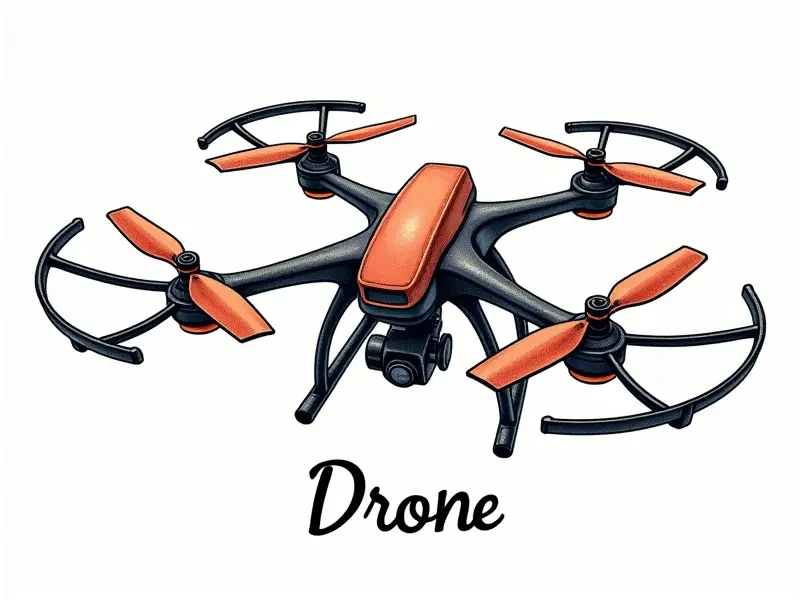Drone racing track design tips

Top Tips for Designing Drone Racing Tracks
Welcome to the exhilarating world of drone racing! Whether you're a seasoned pilot or just starting out, designing an FPV (First Person View) race track can be both challenging and rewarding. This article will guide you through the essential steps and innovative ideas needed to create thrilling and safe drone racing tracks.
Essential Guide to Building RC Race Tracks
The foundation of any great drone racing track lies in its design. Here are some key elements to consider:
- Track Layout: Plan your track layout carefully, ensuring it includes a mix of straightaways and tight turns.
- Safety Zones: Designate safe areas for takeoff, landing, and emergency landings.
- Obstacles: Incorporate natural or artificial obstacles to challenge pilots' skills.
Mastering Drone Track Layouts for Speed
A well-designed track layout can significantly enhance the speed and excitement of your races. Consider these tips:
- Optimal Pathways: Create pathways that allow drones to reach maximum velocity.
- Turn Design: Use banked turns or elevated platforms for smooth transitions.
- Straightaways: Ensure long, straight sections to showcase drone speed and agility.
Innovative Designs for Ultimate FPV Racing Tracks
To stand out in the competitive world of drone racing, think outside the box. Here are some innovative ideas:
- Vertical Elements: Include vertical climbs and descents to test pilots' skills.
- Night Racing: Utilize LED lighting for nighttime races, adding a unique twist.
- Maze Tracks: Design intricate mazes that require precise maneuvering.
Creating Safe and Challenging Drone Race Tracks
Safety should always be the top priority when designing race tracks. Here’s how to balance safety with challenge:
- Hazard Markers: Clearly mark potential hazards such as trees, rocks, or other obstacles.
- Emergency Protocols: Establish clear protocols for handling accidents and malfunctions.
- Pilot Training: Provide training sessions to ensure all pilots are familiar with the track layout.
Secrets to Building Thrilling FPV Race Courses
To build a truly thrilling race course, consider these insider tips:
- Variety of Obstacles: Mix up obstacles to keep pilots on their toes.
- Spectator Experience: Design the track with spectator viewing areas in mind.
- Track Evolution: Regularly update and modify your track to maintain interest.
Insider Tips for Designing Killer Drone Tracks
Designing killer drone tracks requires a blend of creativity, technical knowledge, and safety considerations. Here are some insider tips:
- Material Selection: Choose materials that can withstand the wear and tear of frequent use.
- Track Accessibility: Ensure easy access for setup and maintenance.
- Pilot Feedback: Gather feedback from pilots to continuously improve your track design.
Optimal Pathways for FPV Drone Racing Tracks
The pathways you create are crucial for showcasing the capabilities of modern drones. Consider these points:
- Smooth Transitions: Design paths that allow for smooth transitions between different track sections.
- Aerodynamic Challenges: Incorporate elements that test the aerodynamics and stability of drones.
- Variety in Elevation: Include changes in elevation to add complexity and excitement.
Master the Art of Drone Track Construction
Mastery comes with practice. Here’s how to refine your track construction skills:
- Technical Skills: Develop a strong understanding of drone mechanics and aerodynamics.
- Inspiration from Nature: Draw inspiration from natural landscapes for unique track designs.
- Ongoing Learning: Stay updated with the latest trends and technologies in drone racing.
Best Practices for Designing Extreme Drone Racing Tracks
To design extreme tracks, adhere to these best practices:
- Risk Assessment: Conduct thorough risk assessments before implementing any new features.
- Pilot Skill Levels: Tailor track difficulty to the skill levels of participating pilots.
- Safety Gear: Ensure all participants have appropriate safety gear and equipment.
Ultimate Guide: Building the Best FPV Racing Course
The ultimate guide to building the best FPV racing course includes these key steps:
- Detailed Planning: Plan every aspect of your track, from layout to safety measures.
- Innovative Design: Incorporate unique and challenging elements that set your track apart.
- Ongoing Improvement: Continuously refine and improve your track based on feedback and new ideas.
By following these guidelines, you can create a drone racing track that not only challenges the best pilots but also provides an unforgettable experience for spectators. Whether you're designing a small backyard course or a large-scale event venue, the principles outlined here will help you achieve your goals.

